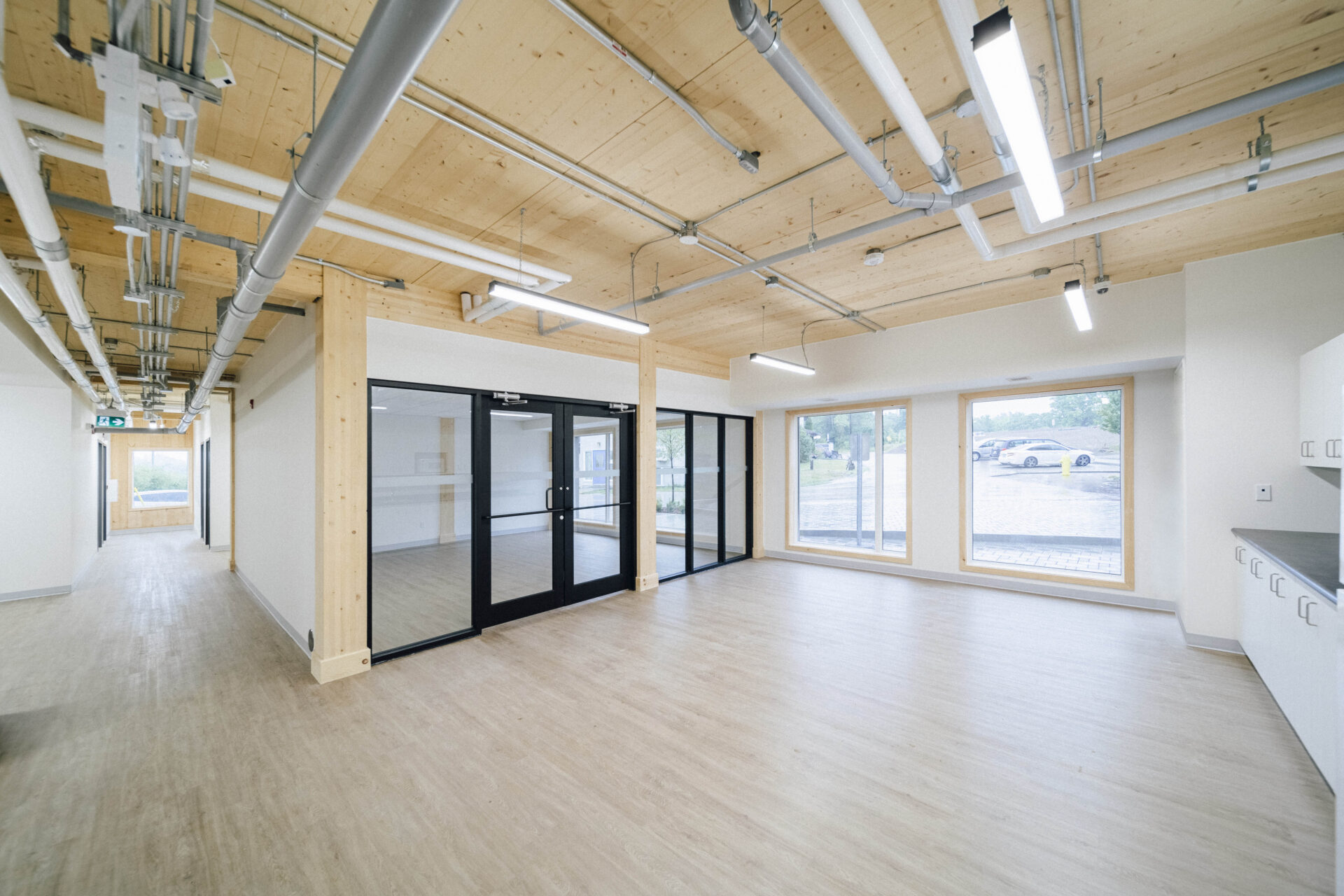The Cornerstone of Sustainable Building

Image taken from https://elementfive.co/projects/east-gwillimbury-affordable-housing/
Mass timber is a made-in-Ontario building solution, and a key player in decarbonizing — and revolutionizing — the province’s construction industry
It’s profitable, it’s beautiful, and it’s sustainable: Those, in a nutshell, are the benefits of mass timber to the Ontario — and international — construction industry.
For the last 150 years, says Patrick Chouinard, midrise buildings in North America have been constructed from concrete and steel, which are the leading contributors to carbon in the atmosphere. Mass timber, he explains, uses cutting-edge technology to create massive panels, posts, beams, and other building components — all made of compressed, layered wood. Strong as steel but significantly lighter, it can be used as flooring, walls, and roofing, displacing that steel and concrete to create wood-based buildings that actually store, rather than emit, CO2. What’s more, mass-timber structures are highly fire resistant and incredibly long-lasting — and they can be disassembled and rebuilt as needs change.
Chouinard is the founder of Element5, which specializes in the design, fabrication, and assembly of modern, mass-timber buildings. From its state-of-the-art, highly automated plant in St. Thomas, Ontario, Element5 manufactures cross-laminated timber (CLT) panels, glue-laminated (glulam) columns and beams, and other mass-timber components, which are assembled by construction crews on site.
Prefabricating building components are faster and cheaper than on-site construction, providing builders with greater return on investment, explains Chouinard. Plus, he notes, “the buildings are gorgeous, which means they can be sold at a premium.”
“Mass timber and advanced wood-based building materials are a huge opportunity for Ontario,” says Chris Walton, CEO of the Centre for Research and Innovation in the Bio-Economy (CRIBE), which proudly supported Element5 in establishing its St. Thomas facility. Because Ontario’s forest system is sustainably managed, says Walton, it can provide a renewable source of raw wood materials to the building industry, leveraging the carbon-storing abilities of the forest to help the industry thrive while meeting its decarbonization goals. “We see mass timber as the cornerstone for sustainable building solutions.”
Mass timber’s sweet spot, says Chouinard, lies between single-family homes and high-rises, in buildings between two and twelve stories. Virtually every university in the province, he points out, is using the technology for new campus buildings and student residences. It’s also a fantastic solution for affordable-housing projects, long-term-care facilities, or hotels. The industry is taking off as demand for attractive, cost-effective, flexible, and sustainable structures skyrockets.
Further, as Chouinard points out, Ontario is poised — geographically and in terms of the province’s rich forest resources — to be the global centre of the mass timber industry. “We’re seeing a huge trend in mass-timber construction here, the central United States, and the eastern seaboard. And we’re perfectly situated to capitalize on that trend.”
CRIBE supports research and development into a variety of mass-timber and other sustainable forest-based building technologies, including biomass-based adhesives, roofing materials, asphalt, thermoplastics, and more. “Sustainable, renewable forest products are moving into every aspect and application of the built environment,” says Walton, “and we’re excited to support players like Element5 as Ontario’s building industry moves toward an increasingly profitable, increasingly sustainable model.”
– By Susan Goldberg
Watch one of Element5’s mass timber buildings being assembled